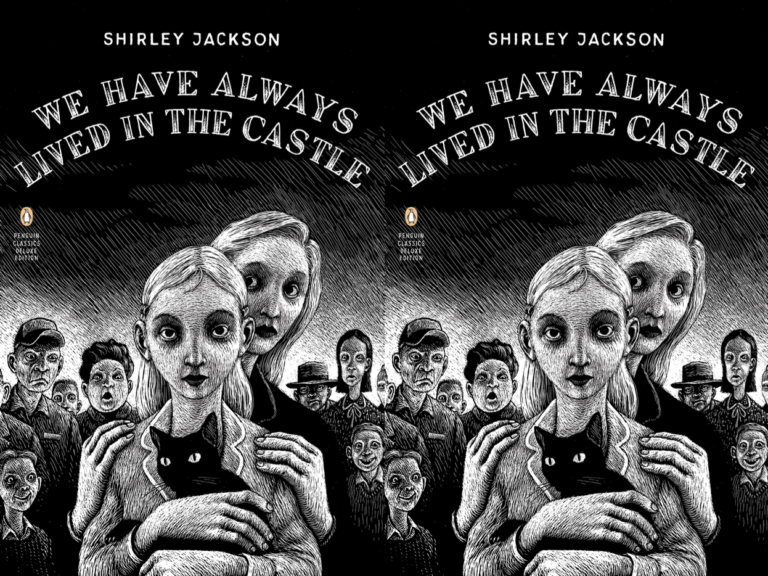The Spatialization of Fiction

A wide range of craft books argues there are a set number of master plots of fiction. Among these theories, the old axiom that stories can be divided into two basic narratives—a person goes on a journey or a stranger comes to town—has stuck around. While this dichotomy consists of intentionally vague oversimplifications, these two sides of the same coin equally rely on characters’ movement through physical space or the co-occupation of physical space to create tension. The person on a journey builds on the timeless intrigue of a character entering the unknown, fleeing the boundaries of a comfortable geography. The stranger coming to town reveals how business as usual is unraveled or reinvented when an unknown force enters predictable territory. In both cases, the setting—the spatial elements of the story—is integral to the characters’ conflicts and complications.
If the cliché is that the world is getting smaller, then the importance of these spatial components is only exacerbated by contemporary concerns over land and resources that have been at the heart of much fiction for centuries. Contested borders, segregated cities, imprisonment, the violence of war, displacement, the omnipresent threat of climate change—these situations arise in a significant number of canonized works, so much so that many have attempted to broadly categorize them by these larger conflicts. It’s easy to fall back on this sort of literary taxonomy—it provides a convenient sense of organization—but other spatial conflicts and curiosities (the more lighthearted call to the open road, for example) can undergird the entire momentum and tone of a novel. Without knowing a character’s place in the world, it’s challenging to gather the full context of their decisions.
The domestic, for instance, is also spatially complex and provides narratives with foundational conflicts and tensions: the quiet sprawl of suburbs, the cramped quarters of apartment complexes, the arguments characters have behind closed doors or on front lawns, the architectural oppression that has defined American housing policy. A character’s lack of agency to move from place to place can develop, if not heighten, a story’s tension. In fact, the only way it’s possible for characters not to consider their surroundings is if they are unthreatened or in control; to ignore how characters occupy space likewise comes from a position of privilege.
In Spatializing Blackness, Dr. Rashad Shabazz argues that Richard Wright “used fiction and nonfiction to document and understand the effect the architecture of confinement had on Black men’s identity,” and later calls Wright, “the most articulate and learned critic of the kitchenette.” Native Son and Black Boy, Wright’s best-known books in those genres, respectively, show the author and his most famous character trapped in spaces that are impossible for a Black man in the United States to safely navigate. Both build narrative conflict from Bigger Thomas, Wright’s protagonist in Native Son, and Wright himself being denied the freedom and resources necessary to escape the physical barriers of white supremacist violence and control.
To imagine how large and small spatial conflicts in fiction function on a utilitarian level, consider the structure of Middlesex by Jeffrey Eugenides. Held by some critics as a contemporary example of the “Great American novel,” Middlesex’s multigenerational narrative of a displaced Greek family begins chronologically with the origin story of Lefty and Desdemona Stephanides, orphaned siblings who are forced from their homeland during the Great Fire of Smyrna. The fire and the Turkish government’s genocidal campaign against Greeks and Armenians make the Stephanides siblings’ familiar space unsafe and uninhabitable. Their geographical displacement, while not the novel’s inciting incident, is the catalyst for the decades of events that follow.
On a ship bound for the United States, Lefty and Desdemona find themselves among strangers, thus allowing them to pursue a burgeoning romantic relationship—they marry before the ship docks—with no one the wiser. The traumatic change in setting propels the narrative momentum and allows these characters to act in ways that would be frowned upon or condemned in their community before this historical catastrophe instigated their relocation. In the close quarters of the boat, gossip around Lefty and Desdemona—who pretend to be unacquainted and coincidentally both heading for Michigan—spreads quickly because the ship’s passengers are bored and without anywhere to go. Eugenides writes, “To pass the time, everybody was soon discussing how the tall young Greek with the elegant bearing had become enamored of the dark beauty who was never seen anywhere without her carved olivewood box.” Lefty and Desdemona’s ruse ensures they can immigrate without their relationship being questioned, but this elaborately staged reintroduction at sea hinges on a level of public spectacle that can only function given the spatial limitations of the setting. In a less confined space, the reinvention of their backstory would go unnoticed, which would weaken their façade.
The Stephanides family moves to Detroit. Lefty and Desdemona’s son, Milton, marries and has two children, one of whom is Cal, the novel’s intersex narrator and protagonist. After the family’s home is raided during the 1967 Detroit Riot, the Stephanides family immediately buys into the wave of white flight and relocates to the suburb of Grosse Pointe. Once again, the invasion of their private domestic space results in narrative propulsion, another collective physical movement that stands in for the larger historical trend of white populations fleeing urban hubs for the suburbs. Milton’s rapid decision to move highlights his urge to further assimilate and tells the reader something about who he is as a character.
Throughout this section of Middlesex, however, whether through plot or exposition, it can’t be said that Eugenides gives the spatially segregated realities of Detroit the same level of attention and analysis as Richard Wright provides in his bibliography. Native Son, as a primary example, considers the spatial dynamics of Chicago’s segregation in minute detail, whereas Middlesex accounts for its spatial elements in broad and expansive strokes. The epic quality of Eugenides’s novel moves too quickly through events to get a full sense of how redlining and other racist housing policies impoverished Detroit. The author prioritizes the spatial fears of the white-adjacent Stephanides family without dwelling on the damage their decision to move inflicts on Detroit’s Black community.
Perhaps by way of explanation, Cal confesses, “Shameful as it is to say, the riots were the best thing that ever happened to us. Overnight we went from being a family desperately trying to stay in the middle class to one with hopes of sneaking into the upper, or at least the upper-middle.” Considered ethnically undesirable, the Stephanides family faces discrimination as they try to find a house in Grosse Pointe—and Eugenides lays out the point system by which the family is denied mortgage loans—but this is easily resolved when Milton offers to pay in cash he received from insurance companies after losing his business during the riot. In a novel of more than 500 pages, Milton’s brief fight to overcome housing discrimination occupies roughly five of them. In contrast, Bigger spends most of Wright’s novel navigating the realities of Chicago’s redlined neighborhoods and is forced to make momentary life-or-death decisions based on where he is in a violently segregated city.
The Stephanides family’s new Grosse Pointe home on Middlesex Boulevard is where the novel ultimately concludes. As the novel builds toward the present, Cal accepts his masculine identity. This character evolution is also reinforced in terms of space. In the final paragraphs, Cal says, “And so it was I who, upholding an old Greek custom no one remembered anymore, stayed behind on Middlesex, blocking the door, so that Milton’s spirit wouldn’t reenter the house. It was always a man who did this, and now I qualified.” Fulfilling this spatial and symbolic role lets Cal reaffirm his identity. Native Son concludes with a more tragic kind of acceptance. Bigger, in prison and having been sentenced to death, accepts his fate while trapped in the confines of a cell. The final lines, “He still held on to the bars. Then he smiled a faint, wry, bitter smile. He heard the ring of steel against steel as a far door clanged shut,” serve as a literal and metaphorical sealing of Bigger’s fate. Cal’s final action is to take on a spatial position of pride and self-acceptance, whereas Bigger’s final action, though still one of acceptance, is to hold on to the bars that cage him, with the understanding that the system has always controlled his fate.
If literary fiction is frequently character-driven, the setting significantly contributes to how those characters are developed. Certainly, distinct characters can exist anywhere in time and space, but the setting offers context and insight as to how they act and make decisions. The spatial elements of the prose are neither throwaway details nor inconsequential to the action. Imagining narratives in these terms is useful in constructing a larger understanding of how characters operate in both mimetic and speculative fictional worlds.
This piece was originally published on May 7, 2020.


